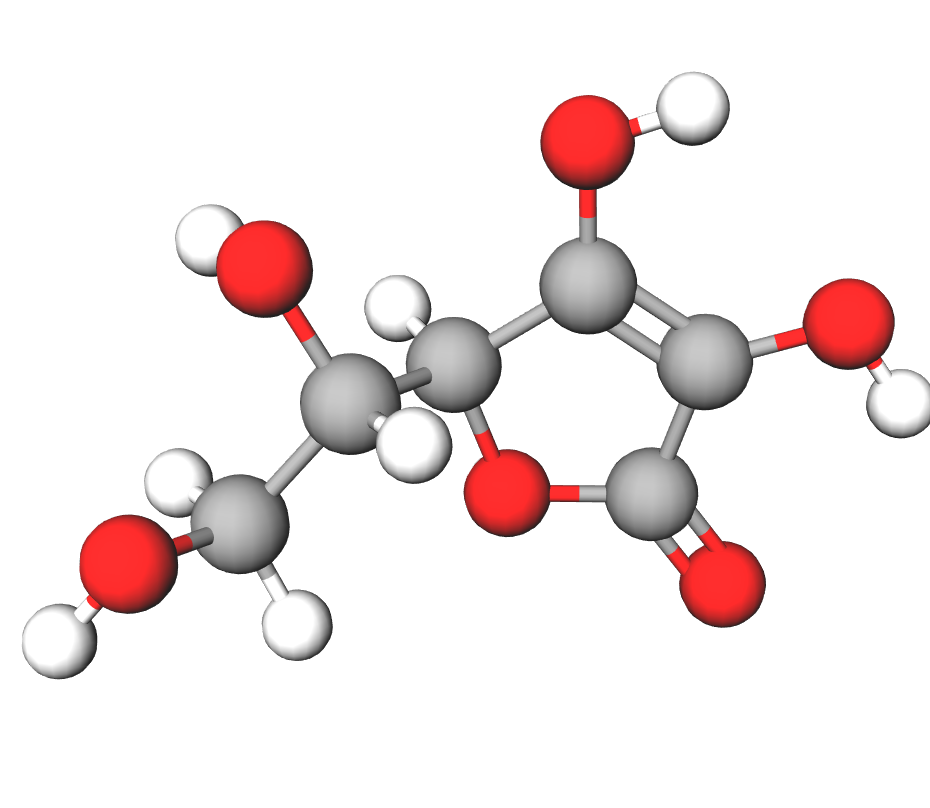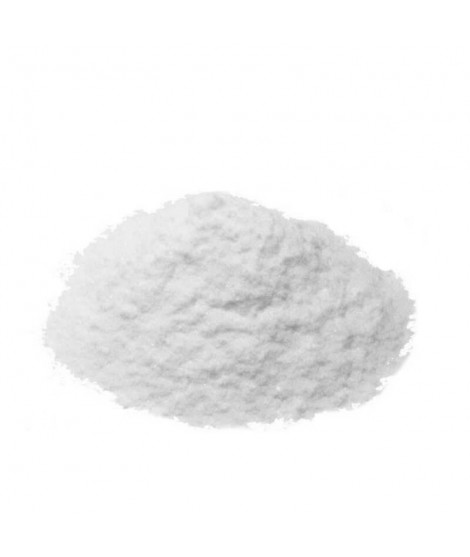ASCORBIC ACID (VITAMIN C) (E300 food grade), kg
12.15 €
27.00 €
Save 55%Vitamin C, CAS 50-81-7, L-ascorbic acid, INCI ASCORBIC ACID, ascorbate.
Parameter | Attribute |
Ascorbic acid | Vitamin C, L-ascorbic acid, ascorbate |
Formula | C6H8O6 |
Structure |   |
IUPAC | l-threo-Hex-2-enono-1,4-lactone ((R)-3,4-Dihydroxy -5-((S)- 1,2-dihydroxyethyl)furan-2(5H)-one) |
INCI | ASCORBIC ACID |
CAS | 50-81-7 |
Molar mass | 176,12 g/mol |
Density | 1,694 g/cm3 |
Solubility | In water 58 g/100 ml |
A compound with the formula C6H8O6. It is vitamin C, or ascorbic acid or ascorbate. It is present in most plant products and is required for the synthesis of enzymes, neurotransmitters and for the proper functioning of the immune system. It also has antioxidant properties.
In the food industry, vitamin C is used as a means of stabilizing the color of a product, giving it a savory, acidic flavor that is not very strong but reminiscent of a slightly sour, tasty fruit. It is very often found in sauces, condiments, gummies and fruit waters. As a food additive, ascorbic acid is designated E300. Vitamin C-treated food should not be cooked, as it is lost in two ways: one when it leaves the product, the other when it becomes inactive, where it is not absorbed by the body.
In sports nutrition, vitamin C is used in a variety of forms, in tablets, capsules, powders and vitamin drinks. The most common intakes range from 25 mg to 1500 mg per serving. Amounts may vary if there is a high level of physical activity and frequent temperature changes (autumn, winter, early spring), as vitamin C is involved in respiration and energy release, and its consumption is higher in these conditions. As it is a water-soluble vitamin, an overdose is virtually impossible. Ascorbic acid is considered to be one of the safest and most effective nutritional additives needed for human health.
In cosmetics ascorbic acid is used for its antioxidant and skin brightening properties. It is most commonly found in products for mature skin, as well as in serums designed to brighten the skin and lighten pigmented spots, and can also be found in exfoliants. Ascorbic acid can be used as a preservative or as part of a preservative system. Vitamin C acts as a keratolytic, brightening the skin and lightening pigmented spots; stimulates collagen production, thereby reducing the wrinkle network; has anti-inflammatory properties. may cause skin irritation and should therefore be used in combination with soothing ingredients. Ascorbic acid is most effective on the skin when properly incorporated into the formula: in combination with other antioxidants, in a sufficiently high concentration (15-20%), with the right pH, and in appropriate packaging protected from oxygen and light. Key INCI functions:
- Antioxidant: Inhibits reactions stimulated by oxygen, preventing oxidation and rancidity
- pH regulator: Stabilizes the pH of cosmetics
- Masking: Reduces or suppresses the odor or main flavor of the product
- Skin conditioning: maintains good skin condition
In medicine, it can maintain the acid-base balance in the human body and restore normal nerve function. It can be used in the treatment of cancer to enhance the effects of chemotherapy. People who get enough vitamin C from fruit and vegetables have a lower risk of developing lung, breast and colon cancer. Very high concentrations of vitamin C in the blood help tumors to shrink. AMD (age-related macular degeneration) and cataracts. These are the two main causes of sight loss in older age. Studies show that vitamin C combined with other nutrients in the early stages of AMD can slow the progression of the disease. People who take vitamin C regularly can alleviate their cold symptoms and recover faster.
In animal husbandry, the vitamin helps to protect against and treat diseases associated with ageing, cellular stress caused by physical activity or joint degeneration (arthritis). Vitamin C neutralizes free radicals in the body (antioxidant), and also helps the recovery of vitamin E, which is a powerful natural antioxidant, involved in iron metabolism and in some anti-infective immune reactions. Vitamin C improves the balance of alkalis and acids in the body and protects against and dissolves struvite bladder stones. However, it is not recommended if the cat has been diagnosed with oxalate stones. High concentrations of ascorbic acid in the body are found in areas of intense fibroplasia. This demonstrates the involvement of vitamin C in tissue regeneration. Vitamin C is involved in fat metabolism (inhibiting the action of the enzyme lipase) and in cholesterol metabolism - a deficiency of vitamin C leads to an increase in cholesterol levels in the liver and in the blood serum. Sulphated metabolites of ascorbic acid cause the formation of cholesterol sulphate from cholesterol and excretion in the urine. This acid also promotes the resorption of iron ions in the intestine. These ions are further utilised by bone marrow cells, so that ascorbic acid is involved in erythrocyte production and hemoglobin synthesis. Ascorbic acid reduces the permeability of blood capillaries in atopic conditions and inflammation, and also protects the arteries against sclerosis by preventing the accumulation of cholesterol in the blood vessel walls. Iron, copper, zinc, calcium ions and flavonoids enhance the biological effects of vitamin C. Vitamin C prevents the concentration of uric acid in heart muscle cells from rising and inhibits the formation of free radicals that damage heart muscle cells in the event of endotoxemia. Ascorbic acid is involved in the suppression of inflammatory processes due to its antioxidant and adrenal stimulating action. It also helps birds and livestock to tolerate heat more easily, to maintain electrolyte balance and not to stunt their growth.
Important: Add the item to your basket, fill in the recipient's details and confirm your order. Thank you!
To save your precious time, we will deliver your order to your address at a time convenient for You!
*- The pictures of the goods may not correspond to the actual appearance, color, assembly or shape of the goods and their packaging. The information in the product description is of a general nature and may not correspond to the information on the packaging of the product and may not be the exact use of the product. The information given on the stocks and prices of goods may, in certain cases, differ from the actual prices and stocks of goods
**- The product complies with the requirements for food additive E300 but is not intended for use as a food additive.
Signal word: not applicable |
Hazard icons: not applicable |
Danger phrases: not applicable |
Precautionary statements: not applicable |
Related products
(8 other products in the same category)










